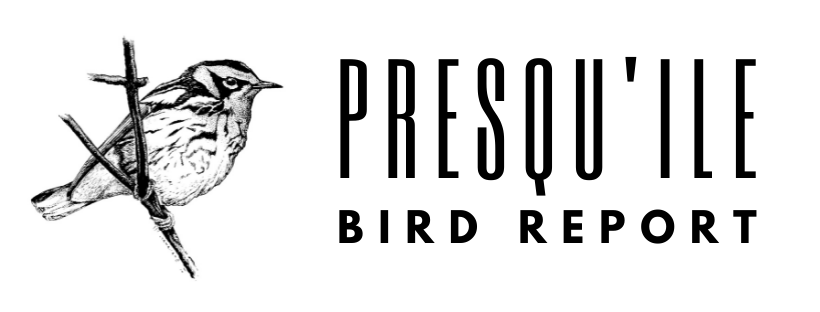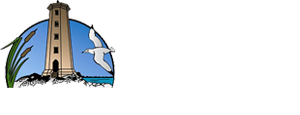
Just when we thought that the spring migration at Presqu'ile Provincial Park had ended, contrary evidence showed up to keep visiting birders (and local ones) on their toes.
Probably the biggest surprise of the week was a very late SNOW GOOSE that sat among the CANADA GEESE on the beach on June 7. The TRUMPETER SWAN with wing tag # K29 was seen again on June 5. Fifteen WOOD DUCKS in the marsh on Monday gave advance notice that similar or larger concentrations will be occurring there in the fall. Eleven LONG-TAILED DUCKS off Owen Point on June 5 were either stragglers or a group of non-breeding individuals that may be spending the summer on Lake Ontario. A male BUFFLEHEAD that was photographed in the woodpile marsh on June 6 (also very late) has not been re-located. The nesting COMMON LOON appears to be still incubating eggs as the parent is consistently sitting on the nest. A LEAST BITTERN was heard in the marsh on June 5 and another was seen on June 10. In addition to the GREAT EGRETS that can be seen on High Bluff Island, one was sitting in a tree overlooking the marsh this morning. A GREEN HERON flew towards the marsh yesterday. Despite the constant presence of DOUBLE-CRESTED CORMORANTS on Sebastopol Island, a few BLACK-CROWNED NIGHT-HERONS continue to occupy their nests there. RED-TAILED HAWKS are not often seen in the Park in summer, but one was seen on June 6.
Until this morning, most of the shorebird migration appeared to be over, but today there were two flocks of SEMIPALMATED SANDPIPERS, totalling about 140 birds. One flock also contained about six DUNLINS. Two SEMIPALMATED PLOVERS on June 6 were also rather late, as was a GREAT BLACK-BACKED GULL on June 5 and 11. Unusual terns sometimes show up in June. For example, four FORSTER'S TERNS were on the beach on this date in 2003, and a SANDWICH TERN spent almost two weeks around Gull Island, beginning on June 14 in 1988.
On June 6, a BLACK-BILLED CUCKOO was photographed and another was heard less than a kilometre away. Also on that date a PILEATED WOODPECKER was seen. Six WILLOW FLYCATCHERS were between the beginning of the Owen Point trail and Owen Point. A late May BLUE JAY migration over the lighthouse is a regular phenomenon, but the sight of five birds that were doing that on June 10 was much later than expected. Three WINTER WRENS were singing in "the Fingers", where they undoubtedly nest. A NORTHERN WATERTHRUSH and three singing WHITE-THROATED SPARROWS were also there and probably breeding, unlike the TENNESSEE WARBLER on June 5 or the BLACKPOLL WARBLER on June 7. A CLAY-COLORED SPARROW was heard in the calf pasture, bringing that observer's Presqu'ile list to 256, not too bad for someone that visits the Park only infrequently. Two birders independently found a singing BOBOLINK in the calf pasture on June 6. ORCHARD ORIOLES and PURPLE FINCHES continue to be seen. The HOUSE SPARROWS at the end of Bayshore Road have fledged several young, perhaps the first confirmed breeding for Presqu'ile.
To reach Presqu'ile Provincial Park, follow the signs from Brighton.
Locations within the Park are shown on a map at the back of a tabloid that is available at the Park gate. Access to the offshore islands is restricted from March 10 onward to prevent disturbance to the colonial nesting birds there.
Birders are encouraged to record their observations on the bird sightings board provided near the campground office by The Friends of Presqu'ile Park and to fill out a rare bird report for species not listed there.
Questions and comments about bird sightings at Presqu'ile may be directed to: FHELLEINER@TRENTU.CA.


